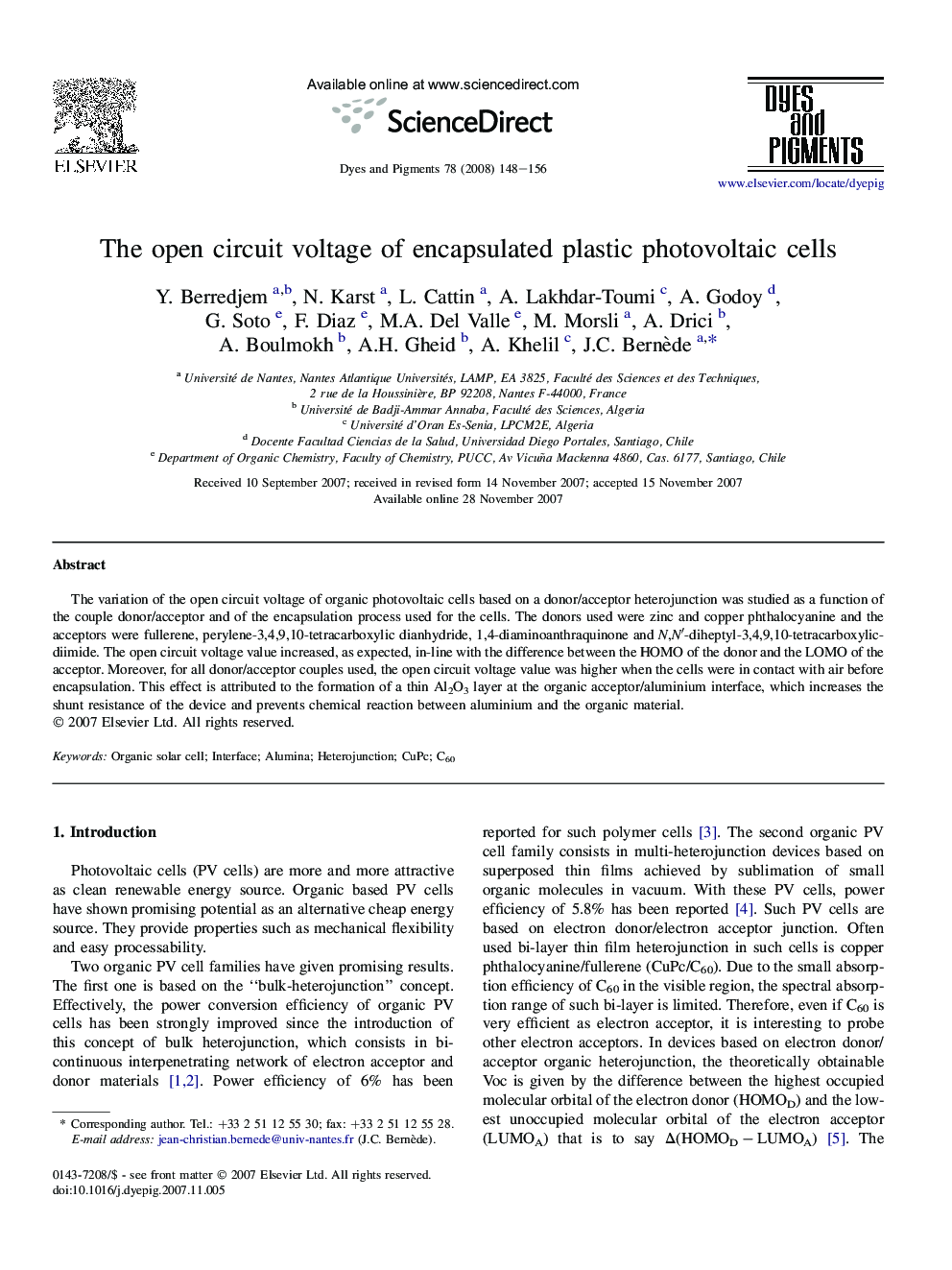| Article ID | Journal | Published Year | Pages | File Type |
|---|---|---|---|---|
| 178090 | Dyes and Pigments | 2008 | 9 Pages |
The variation of the open circuit voltage of organic photovoltaic cells based on a donor/acceptor heterojunction was studied as a function of the couple donor/acceptor and of the encapsulation process used for the cells. The donors used were zinc and copper phthalocyanine and the acceptors were fullerene, perylene-3,4,9,10-tetracarboxylic dianhydride, 1,4-diaminoanthraquinone and N,N′-diheptyl-3,4,9,10-tetracarboxylicdiimide. The open circuit voltage value increased, as expected, in-line with the difference between the HOMO of the donor and the LOMO of the acceptor. Moreover, for all donor/acceptor couples used, the open circuit voltage value was higher when the cells were in contact with air before encapsulation. This effect is attributed to the formation of a thin Al2O3 layer at the organic acceptor/aluminium interface, which increases the shunt resistance of the device and prevents chemical reaction between aluminium and the organic material.
